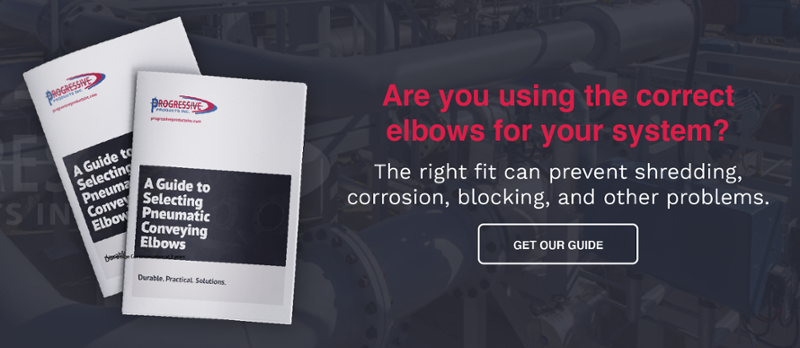A pressure drop in your pneumatic conveying system can cause a slowdown in your conveying system’s capacity. It also has the potential to cause more serious problems, like the piling up of bulk material particles. This in turn could lead to periods of downtime and the inefficiency of the entire system. Continue reading to find out what happens when there’s a drop in pressure in conveying systems, why they occur, and what you can do to reduce them.
What Happens When There’s a Pressure Drop in Your Conveying System?
The pressure drop in conveying lines is directly proportional to the distance from the pressure or vacuum source. The further the bulk material particles are from the power source of the flow, the greater the pressure drop becomes. The main indicator of a pressure drop is, of course, your pressure gauge.
If the gauge shows a pressure value that’s above the designed or intended pressure value for a particular bulk material, the pipeline is being overfed. This means that particulates are significantly blocking the flow of gas. To remove or shrink the blockage, you should reduce the feed rate.
When pressure drops below the intended value, it means that the volume of air flowing in the pipelines is insufficient to effectively convey the material.
Monitoring the pressure through the pressure gauge is important, but you also need to monitor air velocity. Any increase in the air supply pressure will result in a lower velocity in the line inlet.
Why Do You Get Pressure Drops in Pneumatic Systems?
A pressure drop in conveying systems is a primary variable that’s determined by various factors. Some of the major factors of a pressure drop in pneumatic conveying are:
- Length of pipes: The length of your pipes is inversely proportional to the pressure: as the pipes become longer, the pressure gradually drops. A sudden pressure drop, however, isn’t usually directly related to pipe length.
- Diameter of pipes: Given the same amount of air mover force, a pipe with a smaller diameter has greater pressure compared to a pipe with a larger diameter.
- Power of the air mover: The greater the input power, the higher the air pressure. A sudden and unintended drop in pressure could mean there is a problem with the air mover, either in the fan blades or in the motor.
- Obstructions: Big chunks of foreign objects or bulk material particles can cause obstructions. Some bulk materials are prone to caking when moisture is added or when the temperature is low. When obstructions build up, they block the flow of gas.
- Volume of bulk material: If the feed rate of the bulk material is too high, the volume of material can block the pipe system because there is an insufficient amount of airflow needed to convey the particles. The volume also affects the saltation velocity of the material you’re conveying.
How to Deal With Pressure Drops
Any unintended pressure drop in your pneumatic conveying system should be dealt with depending on what’s causing it. For example, if there are obstructions inside the pipes, you should remove the obstructions.
Some causes of sudden pressure drops are complex and may require expert attention. For instance, if the motor breaks down, it may need to be repaired or replaced. Unless you have the knowledge and skills, you should not attempt any DIY repair yourself. Instead, consult an expert who can provide you with the correct and most effective solutions.
How to Reduce Drops in Pressure in Your System
There are several ways you can reduce pressure drops in your pneumatic conveying system.
One way is to use pipes with a specific bore that can reduce the turbulence and allow a smoother flow of the air. The design and components of your conveying system are also primary factors, so you should also do periodic inspections to ensure that there are no leaks and that the various components are functioning efficiently.



